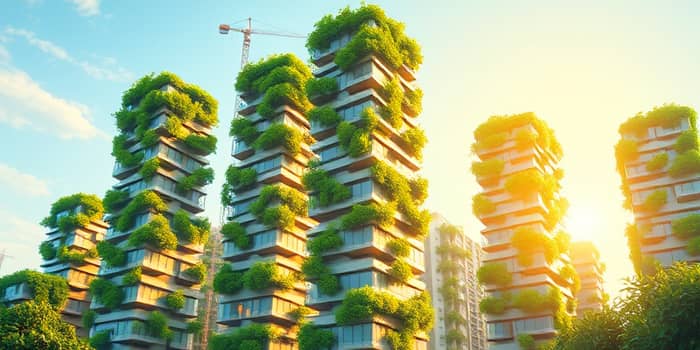
In the evolving landscape of construction and investment, sustainable building practices have emerged as a potent force shaping both environmental stewardship and corporate profitability. By merging ecological responsibility with sound financial planning, developers and investors are redefining the benchmarks of success within the real estate industry.
Sustainable building, often referred to as green construction, encompasses the design, construction, and operation of structures that maximize environmental, economic, and social benefits across their entire lifecycle. These practices span site selection, resource efficiency, waste reduction, and occupant health considerations.
At its core, green construction seeks to minimize negative environmental impacts through efficient energy use, responsible material selection, and rigorous waste management. Moreover, it aligns with global goals to reduce carbon footprints and promote healthier living and working environments.
While many stakeholders express concern about initial capital outlays, research has demonstrated that the premium on sustainable projects is narrowing. Early adopters have witnessed profound financial returns that more than justify higher up-front expenditures.
For example, a landmark green building project faced a significantly higher upfront construction costs, nearly 30% above conventional estimates. Yet it realized an operating cost reduction ensured long-term payoff through energy savings, lower maintenance expenses, and reduced waste management fees.
These operational savings translate into a compelling return on investment. Many green builds recoup additional construction expenses within a payback period of 7 to 10 years, driven by sustained reductions in utility and upkeep costs.
In addition to cost savings, green-certified properties often command higher valuations. Market data shows LEED buildings can achieve up to a 10% value increase over non-certified peers. The trend holds across major cities and regions.
Rental premiums are equally striking. In North America, green offices yield roughly 7.1% higher rents, while London sees 11.6% and Asia 9.9% premiums. These figures underscore tenant preference for environments offering comfort, efficiency, and corporate responsibility.
Beyond direct financial gains, sustainable construction delivers significant societal advantages. Improved indoor environmental quality supports occupant health, reducing absenteeism and boosting productivity.
Studies have linked enhanced daylight, superior air filtration, and use of non-toxic materials to measurable performance improvements within corporate settings. This phenomenon fosters higher tenant retention and aligns with corporate wellness initiatives.
Technological innovation underpins the evolution of green buildings. Energy generation and conservation systems have become more affordable and efficient, broadening adoption across both commercial and residential projects.
Waste management strategies, such as on-site sorting and modular construction techniques, further reduce environmental impact while generating cost savings through material reuse and diversion.
Policy frameworks and financial instruments play a pivotal role in enabling green construction. Incentives reduce financial barriers, increase developer confidence, and drive market transformation toward sustainability.
These incentives, coupled with evolving building codes and regulatory standards, make sustainable practices a strategic necessity and a risk mitigation tool for long-term asset value preservation.
Despite the clear upside, green construction faces hurdles. Higher initial capital requirements can dissuade risk-averse stakeholders. Comprehensive education on the total cost of ownership and integration of green financing mechanisms are essential to overcome these barriers.
Standardized certification systems such as LEED and BREEAM provide transparency and credibility, but navigating these processes demands expertise. Clear communication of performance expectations and rigorous post-occupancy evaluations ensure that projected savings and environmental benefits materialize.
The market for sustainable building is poised for significant growth. Analysts project a global increase of $187.4 billion in green building value between 2020 and 2027. Concurrently, financial markets have embraced sustainability as an investment criterion, with Green REITs raising $28 billion in capital in 2021, up from $0.7 billion in 2017.
Looking forward, the industry is coalescing around net-zero construction in developed markets, demanding both technological maturity and policy support. Nearly 90% of building product companies now derive revenue from sustainable solutions, reflecting a profound shift in market demand and corporate responsibility.
Committing to sustainable design not only delivers net lifecycle savings of $23,000 and demonstrates a savings-to-investment ratio of 1.5, but also secures lasting environmental and societal benefits. Early movers position themselves to reap regulatory advantages, attract environmentally conscious tenants, and foster healthier communities.
As regulations tighten and market demand intensifies, the integration of green construction practices is no longer a niche strategy but a foundational element for future-proof growth. By building block by block, stakeholders can cultivate resilient portfolios and leave a positive legacy for generations to come.
References





